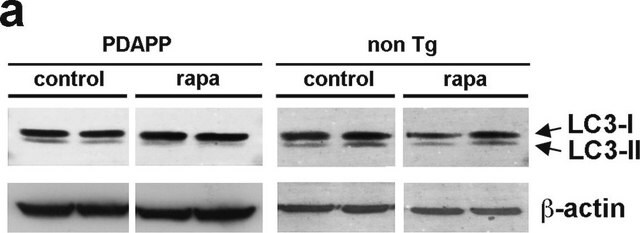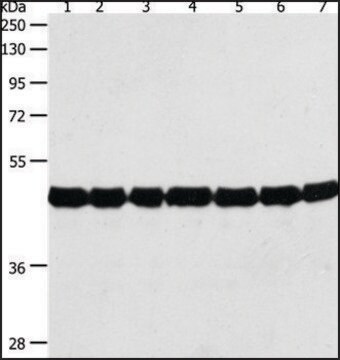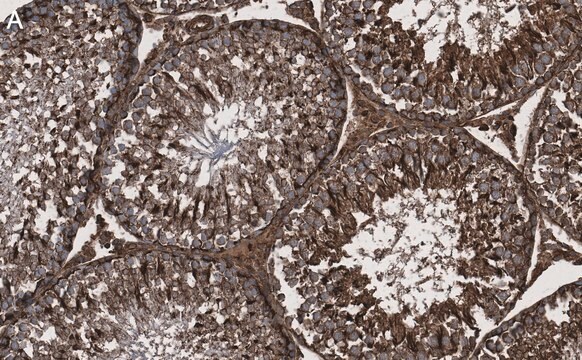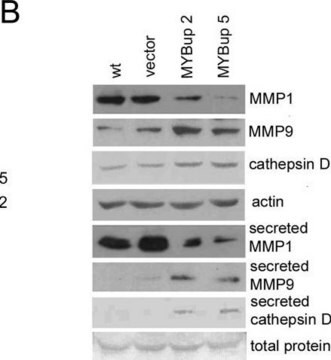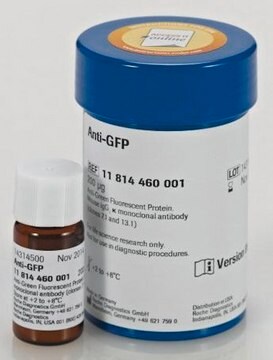A0480
Anti-Actin (plant) antibody, Mouse monoclonal
clone 10-B3 (MAbGPa), purified from hybridoma cell culture
Synonyme(s) :
Monoclonal Anti-Actin (plant) antibody produced in mouse
About This Item
Produits recommandés
Source biologique
mouse
Niveau de qualité
Conjugué
unconjugated
Forme d'anticorps
purified from hybridoma cell culture
Type de produit anticorps
primary antibodies
Clone
10-B3 (MAbGPa), monoclonal
Poids mol.
antigen ~45 kDa
Espèces réactives
plant
Conditionnement
antibody small pack of 25 μL
Technique(s)
immunohistochemistry: suitable
indirect ELISA: suitable
western blot: 1-2 μg/mL using corn leaves extracts
Isotype
IgG2b
Conditions d'expédition
dry ice
Température de stockage
−20°C
Modification post-traductionnelle de la cible
unmodified
Informations sur le gène
Arabidopsis thaliana ... ACT8(841347)
Vous recherchez des produits similaires ? Visite Guide de comparaison des produits
Description générale
Monoclonal Anti-Actin (plant) antibody recognizes actin in several plant species including Dictyostelium. In Arabidopsis, the antibody recognizes all eight actins isoforms (ACT1, 2, 3, 4, 7, 8, 11 and 12).
Immunogène
Application
- two-layer phos-tag polyacrylamide gel electrophoresis (PAGE)
- immunohistochemistry and enzyme-linked immunosorbent assay (ELISA).
- immunoblotting
Actions biochimiques/physiologiques
Forme physique
Clause de non-responsabilité
Vous ne trouvez pas le bon produit ?
Essayez notre Outil de sélection de produits.
Code de la classe de stockage
10 - Combustible liquids
Classe de danger pour l'eau (WGK)
WGK 3
Point d'éclair (°F)
Not applicable
Point d'éclair (°C)
Not applicable
Équipement de protection individuelle
Eyeshields, Gloves, multi-purpose combination respirator cartridge (US)
Certificats d'analyse (COA)
Recherchez un Certificats d'analyse (COA) en saisissant le numéro de lot du produit. Les numéros de lot figurent sur l'étiquette du produit après les mots "Lot" ou "Batch".
Déjà en possession de ce produit ?
Retrouvez la documentation relative aux produits que vous avez récemment achetés dans la Bibliothèque de documents.
Les clients ont également consulté
Articles
In the midst of beeping lab timers, presentations and grant deadlines, it is easy to take for granted the quality of lab reagents.
Notre équipe de scientifiques dispose d'une expérience dans tous les secteurs de la recherche, notamment en sciences de la vie, science des matériaux, synthèse chimique, chromatographie, analyse et dans de nombreux autres domaines..
Contacter notre Service technique
